Kleros was recommended to me by a reader. He said that it is a hidden gem (as not many people know about it) and he knows a lot of people who make a killer earning on that platform.
One of the reasons for this might be that it is a crypto-based/Web3 website, so the majority of the crowd is already filtered out. Less workers = More earning potential. But like every other crypto-based project (like Axie Infinity), you are required to stake in some crypto by buying it first.
This further decreases the number of people willing to join the platform, as there’s a barrier to entry involved.
What is Kleros? (the Technical Explanation)
Kleros defines itself as a crypto-based dispute resolution layer. Basically, it is a decentralized application built on Ethereum that acts as a decentralized third party to arbitrate conflicts in all types of contracts, from the most basic to the most complicated.
To get jurors to rule correctly, it uses game theory incentives. As a result, a conflict resolution system that is quick, economical, dependable, and decentralized has been developed.
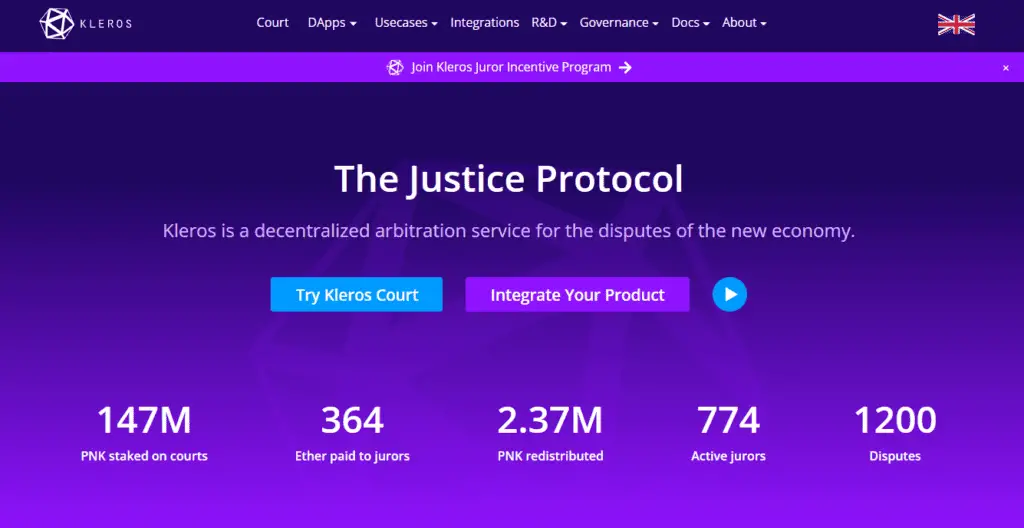
How Kleros Works in Layman Terms (The Simple Explanation)
Janet is a New York-based entrepreneur. She uses a freelance portal to hire John, a programmer from Mexico, to create a new website for her company. John gets to work after they agree on a price, terms, and conditions.
He delivers the thing a few weeks later. Janet, on the other hand, is dissatisfied. She claims that John’s work is of far lesser quality than anticipated. John responds that he followed the deal to the letter.
Janet is dissatisfied. She can’t afford to employ an attorney for a claim for a few hundred dollars with someone halfway around the world. What if the contract included a condition that any disputes would be resolved by a Kleros court?
Kleros is an Ethereum-based decentralized application. Janet taps a button that says “Send to Kleros” and fills out a basic form describing her claim after John stops responding to her email. Kwasi is a software developer in Dubai, thousands of kilometers away.
He spends his “dead time” on the bus traveling to work looking for arbitration employment on the Kleros Court website (court.kleros.io). He supplements his principal income by working as a juror in software development disputes between freelancers and their clients, earning a few thousand dollars per year. In the Website Quality sub court, he generally rules.
To resolve disputes between freelancers and the customers, this court requires html, javascript, and web design expertise. Kwasi stakes 2000 PNK, Kleros’ token for selecting jurors in disputes. The more tokens someone wagers, the more likely he is to be chosen as a jury member.
Kwasi receives an email around an hour later: “You’ve been chosen to serve on a jury in a website quality dispute. You can get the proof here. You have three days to make your choice.”
Juanita, a programmer from Sydney, and Gripely, an Egyptian, both will receive similar emails after staking their PNK in the Website Quality sub court. They were chosen at random from a pool of around 3,000 applicants. Everyone will work together to resolve the conflict between Janet and John.
On the way home on the bus, Kwasi weighs the evidence and decides who is correct. Janet and John get an email two days later, after the three juries have voted: “The jury has ruled in Janet’s favor.” The terms and conditions were not followed when the website was supplied. The website was not delivered in line with the parties’ agreed-upon terms and conditions. Janet has received the funds thanks to a smart contract.” The jury is rewarded for their efforts, and the case is concluded.
Contracts will detail the voting alternatives accessible to jurors. “Reimburse Janet,” “Give John one more week to finish the website,” and “Pay John” are examples of options that could be available. The smart contract will also indicate how the contract will behave once the ruling is made.
The Pinakion Token (PNK)
The term Pinakion was inspired by the Ancient Athenians’ and was a symbol for selecting jurors for their popular trials.
People that hold the Pinakion (PNK) token are qualified to serve as jurors by staking the token. The number of tokens a juror stakes determines the likelihood of being drawn as a juror for a certain issue.
What is Staking and why should I stake my tokens?
- Staking is a common method of generating passive income from cryptocurrency investments.
- Staking allows cryptocurrency owners to put their assets to work and earn passive income without having to sell them.
- Staking can be compared to placing money in a high-yield savings account in the crypto world.
- When you stake the digital assets, it locks up the money in order to participate in the blockchain’s operation and security.
The more tokens you bet, the more likely you are to be chosen as a juror. Jurors who do not stake PNK have no chance of getting selected. This eliminates the selection of inactive jurors. The Kleros design relies heavily on PNK.
A malicious party may create a large number of addresses to be drawn a large number of times in each dispute if jurors were merely drawn at random. The malicious party would be drawn more times than all honest jurors.
Getting Started as a Juror on Kleros (Step-by-Step Guide)
The first step is to purchase PNK
Step 1: Go to Bitfinex’s official website.
Step 2: If you haven’t already, create an account. Log in to the account once you’ve finished.
Step 3: To place an order, you must first deposit ETH. Copy the address for “Exchange Wallet” from https://www.bitfinex.com/deposits/new/ethereum.
Step 4: Send some ETH (at least 0.1 ETH) to the address you copied above in order to purchase PNK.
Step 5: Once you’ve received the ETH, follow the steps below. Look for the “PNK” token on the left-hand side. There will be two market choices.
One for USD and the other for Ethereum.
To get to the PNK-ETH pair right away, go to https://www.bitfinex.com/t/PNK:ETH.
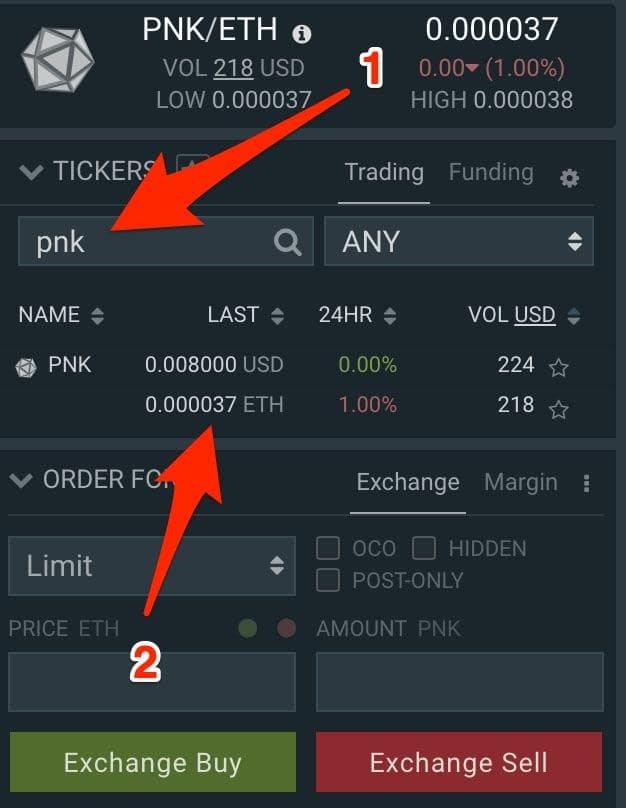
Step 6: There are several alternatives for creating a buy order on the order form. We can go with Market Order to keep things simple
Step 7: Use the little green circle to enter the maximum amount you can buy with the ETH you’ve invested.
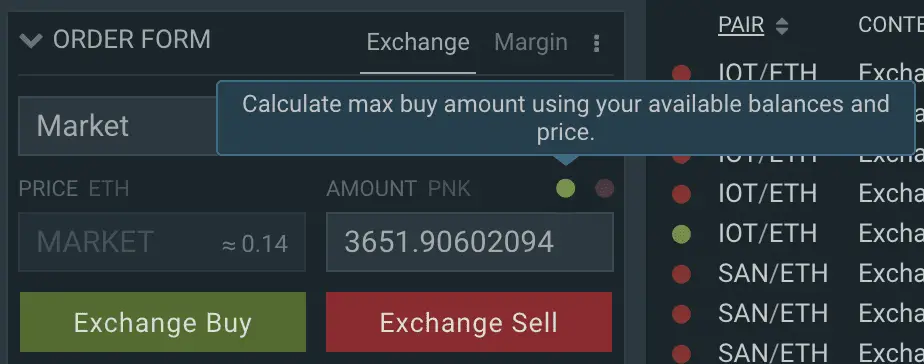
Step 8: Select “Exchange Buy” and wait for the order to arrive. Once completed, you’ll see something like this in the bottom right corner:

Step 9: Once you’ve finished, go to the balance area and look for PNK (on the left side)
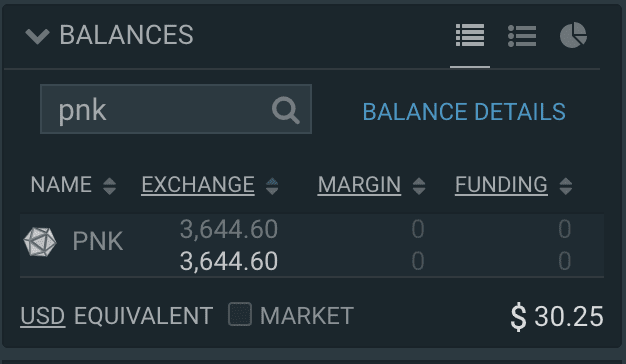
Step 10: Right-click it and choose “Withdraw PNK”.
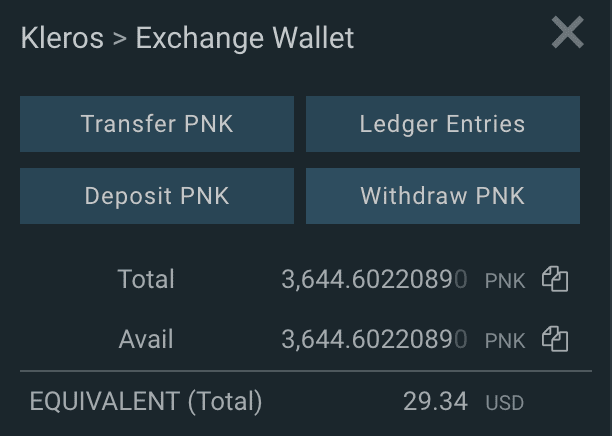
Step 11: Provide your address as well as the total money you wish to withdraw. If the warning “minimum amount required” appears, click the help button to allow one minor withdrawal per week.
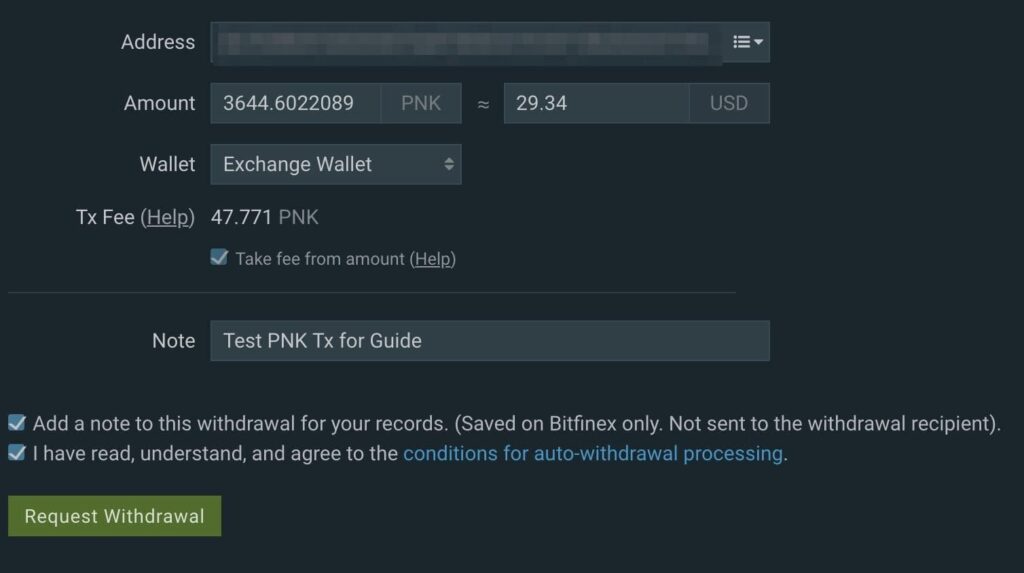
Step 12: After clicking “Request Withdrawal”, you will receive an email confirming the request. Approve the transaction by clicking the link in the email. After it has been accepted, it should appear in your wallet after some time.
VOILA you are now a proud owner of the PNK token
The Kleros Court and How to Work as a Jury
Through the Dispute Resolver and the community-run dashboard, you can keep track of all ongoing conflicts and important court statistics.
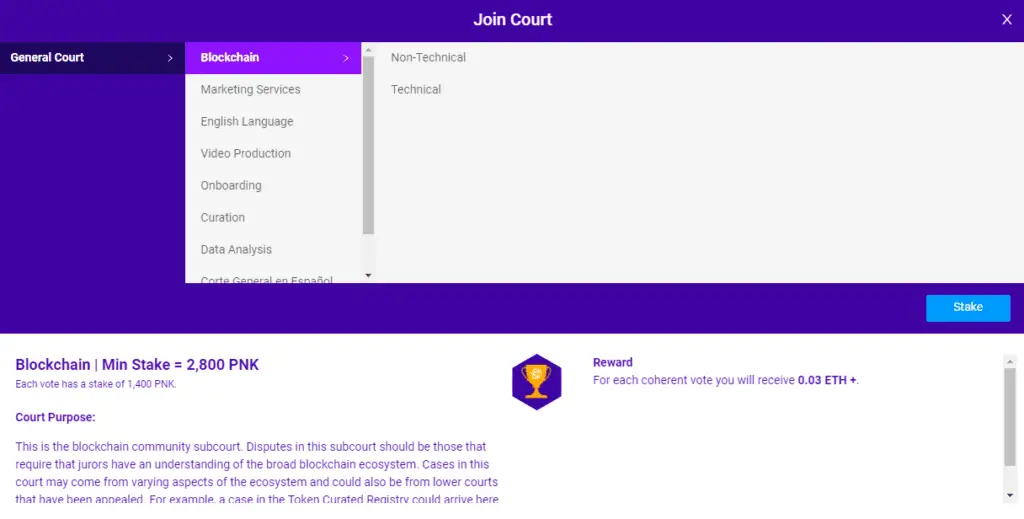
Kleros currently operates six sub courts, as shown above:
- Blockchain: Jurors in this court must have a basic understanding of the blockchain ecosystem. It is separated into two subcourts: technical and non-technical.
- Marketing Services: In this court, jurors resolve disputes over the quality of paid marketing services such as sponsored articles, social media promotion, and public relations writing.
- English Language: Jurors decide on disputes originating from Linguo-created translation projects.
- Video Production: As the name implies, this court is responsible for resolving disputes between parties over videos purchased through Kleros Escrow.
After you’ve looked over the courts, stake your PNK and wait for your turn to be drawn. The juror selection procedure looks like this:
1. Go to Kleros Court. Click ‘Join a Court’ in the header.

2. After you’ve decided on a court, click the enormous blue ‘Stake’ button. Note that if you stake in one court, you are automatically staked in all other courts. This is for appeals reasons.
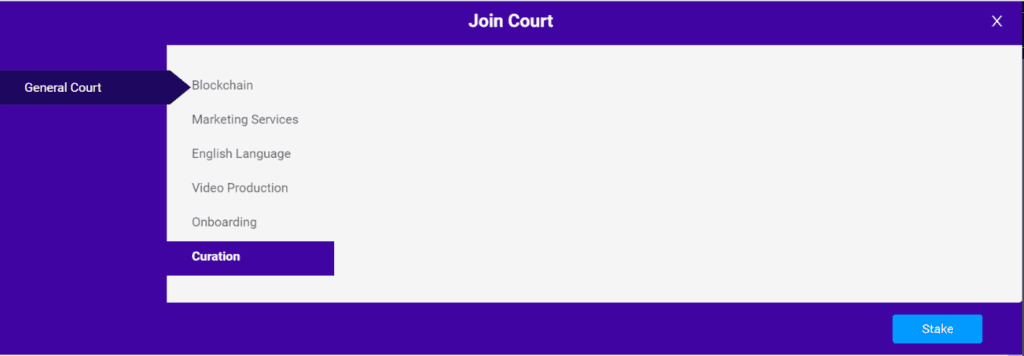
3. When you click the ‘Stake’ option, you can enter the amount of PNK you want to deposit into the system. The amount of PNK you stake determines your chances of being chosen as a juror. The Onboarding Court’s minimum stake is currently 1000 PNK, while the higher-stake Curation Court’s minimum stake is 1600 PNK.

4. Return to the ‘Courts’ page once the fee has been paid and the transaction has been confirmed to see your staked PNK in the court you choose.
A user has staked 3000 PNK, as seen below. Remember, the higher the stakes, the more likely you are to be drawn for cases in any court.
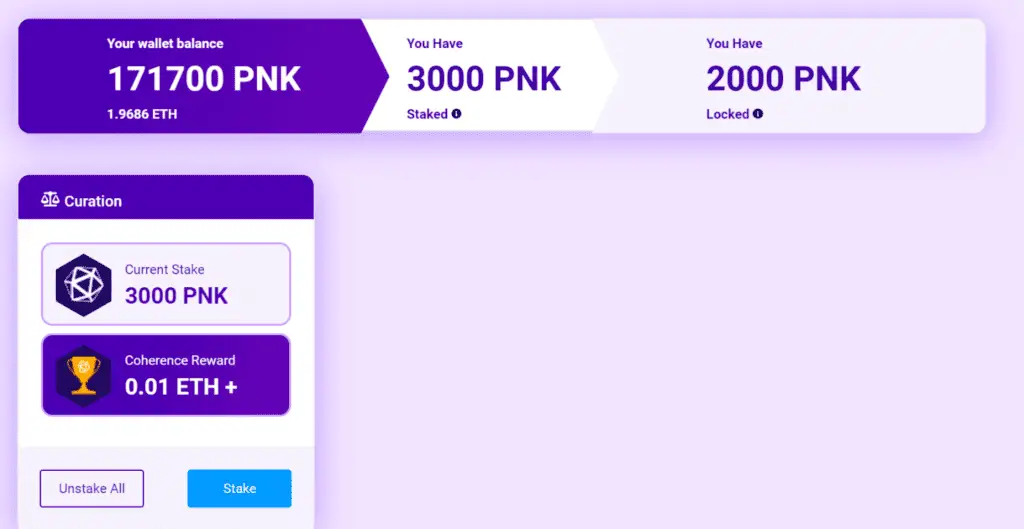
There will be an overview of the award each juror will receive in the image above. Additionally, once you have been chosen as a juror, each court has a set amount of PNK that will be locked into the case, which is a percentage of your total staked PNK and varies per court.
If you are selected as a juror, you will see something similar to this in your ‘My Cases’ tab. You can then review the case, evidence, and vote by selecting ‘See Details.’
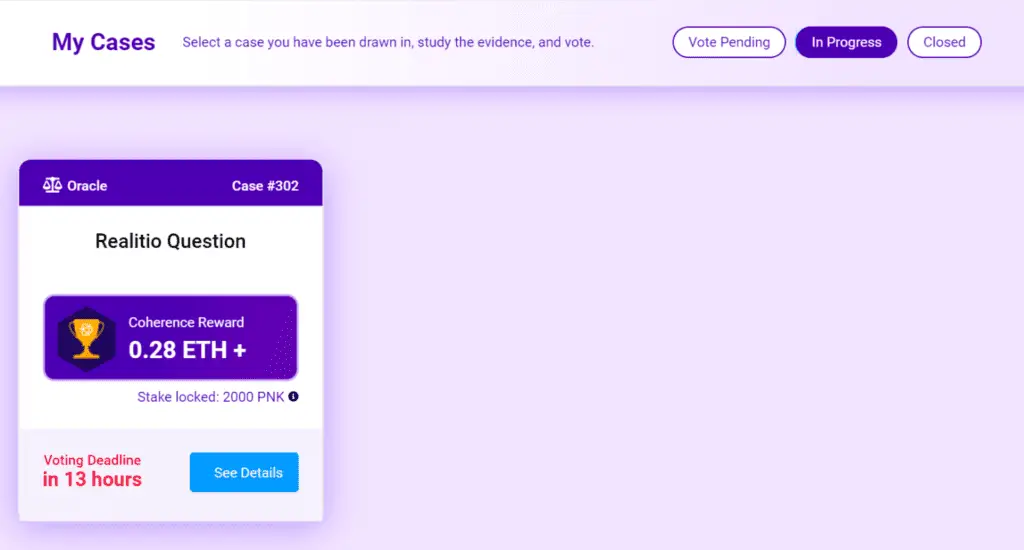
By signing up via the email symbol in the menu header, users can be notified of any cases, challenges, or changes in the status of a dispute.
More Questions? They have all the answers.
There already are dozens of online juror websites (that I will be writing soon about), but Kleros has a novel twist to it, which definitely makes it stand out.
This seems like a very interesting and profitable project with a lot of expendable uses in the future. We should all get on this and enjoy being a juror.
If you still have questions or doubts, you can check out their full guide or hit them up on their Telegram community.


